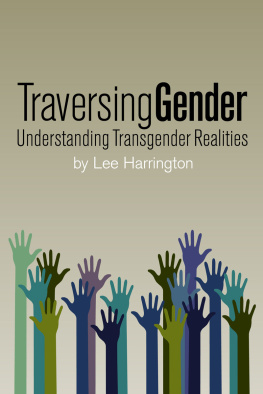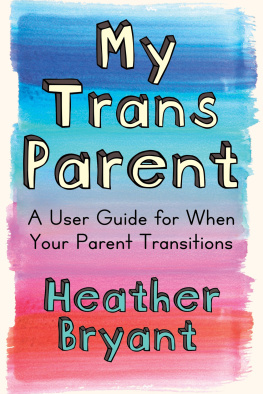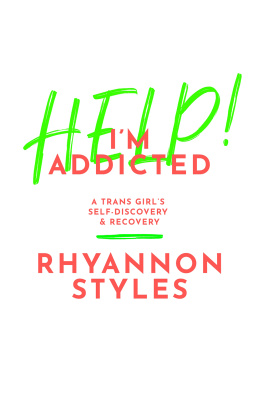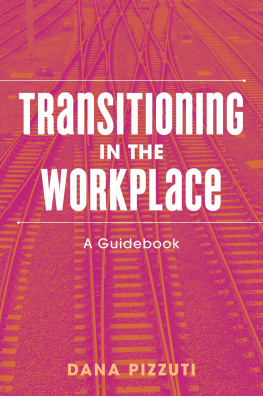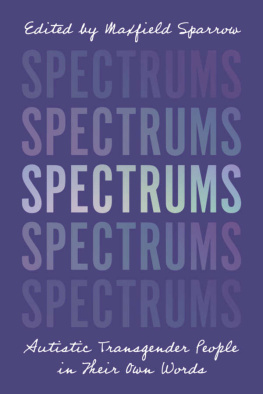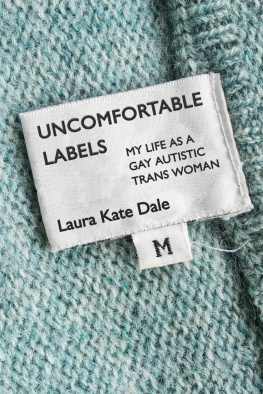Preface
I am the partner of a trans woman. My wife transitioned a number of years ago (but when exactly that depends on when you start counting). All throughout her transition, I was adamant that I would support her. I have tried to find resources to help me get my head around everything that was happening, but anything that was available was largely aimed at being a good ally.
But, for me, being the partner of a trans person means that you are more than just an ally. You are an integral part of the transition process. You arent just along for pride marches; youre there in the weeds. Youre up at 2 a.m. holding your partner when their dysphoria is unbearable; youre there helping them research all the possible ways to make them feel better; youre there when theyre hoping desperately for the right answer from the clinicians; youre there in the long stretches between appointments; youre there waiting for them when theyre in surgery (hoping beyond hope that theyll be okay and that this will make it all right). Youre the person they depend on. Youre also there the first time they try out a new hairstyle, when they notice the changes in their body and cant stop smiling, when they start hormones for the first time, and when they get correctly gendered by a stranger. Youre there to watch them grow into the more complete, more honest parts of themselves. Youre there through all of it. You are more than just an ally.
I think its important to highlight the experiences of people whose partners are trans. I also want to provide a guide for what to expect during transition and how to manage some of the complicated and confusing feelings that partners often go through. Thats what this book is about. Its a book that I would have given myself 20 years ago.
This book is primarily for people who are in a relationship with a trans person. The focus on partners is because thats what my own history is, although you may also find it useful if youre a parent of a trans person or a supportive ally.
I have tried as far as possible to include all aspects of transition, for trans women, trans men and non-binary people too. I am mindful that every persons journey is different. This book is not the be-all and end-all for how transitions work and what happens. Its intended to be a starting point. Its a place where you can get some of the basics, so you have the background to open up the conversation.
Not all the experiences I cover here are universal, and many of them may not apply to you or your partner. Not all the steps that I list as part of transition will apply to your partner because every persons journey is different. In this book Ive tried to give a practical approach to what sorts of things a person in a relationship with a trans person can expect. Im not here as a single voice for trans people or a single voice for all partners of trans people. Im just here, with my experience backed up by research or professionals if needed trying to make the world a slightly easier and less confusing place for you.
This book is also not the final word on everything trans and trans relationships; none of this is intended to replace discussion and exploration. The key to ensuring that your relationship with a trans person (and with anyone else, for that matter) works is communication. Keep talking, and enjoy the journey.
Introduction
Being a person whose partner is trans can be complicated. There is a whole host of new information that youll need to come to grips with relating to language, pronouns and identity politics. Youll find yourself in the position of being a quasi-medical expert as well as an administration guru all this while navigating your own identity and questions about sexuality and self-definition that you may never have considered before.
You may feel uncertain about the future, not really understanding what will happen and what the effects of the possible hormones and surgeries are going to be, alongside trying to figure out what this means for you, your family, your friends and the universe of people that you inhabit.
It is okay to feel a bit overwhelmed; the key thing to remember is that you will get through this. Allow your love to carry you through the harder times, and dont forget to celebrate the small things. Itll all turn out okay in the end.
Contributions
The book includes contributions from current partners of trans people and one former partner. Their identities vary across the spectrum and are representative of people whose partners also identify throughout the gender spectrum and are in various stages of their transitions.
Where people have requested anonymity, names have been replaced with pseudonyms that are kept consistent throughout the book. The contributions are included as they have been provided, with only minor edits to provide context/clarity. As a matter of course, I have anonymised the names of trans people, companies and clinicians.
The contributions are straightforwardly identified and are placed to show a partners experience in that specific context.
I believe that I fell in love with the person and the personality my wifes personality hasnt changed; she is simply happier in herself (not always with how she looks but definitely in the fact that she gets to live how she wants/feels). (Stevie)
Disclaimers (mainly though not exclusively about language use)
This book covers trans women, trans men and non-binary people. Recognising that all trans people are different, I have used the gender-neutral pronouns they/them/their in all the sections where I refer to trans people in the third person. This is specifically so that non-binary people are not erased in the discussions of hormones/surgery/etc.
Because this book is aimed at partners, this does mean that trans people are referred to in the third person in some sections. I do not intend to contribute to othering trans people, but in this specific context, I feel its important to centre the partners experiences.
In terms of referring to previous genders, I acknowledge that no matter how I write, the language is clunky and very binary. I am going to have to refer to peoples assigned genders at birth at times, but where I do that, Ive tried to be as sensitive as possible rather than opting for the medical language of hormones and genitalia.
Im also in a monogamous relationship, which means that I write from that specific point of view. I recognise that there are polyamorous relationships with trans people, and for some people, a poly relationship is right for them. To try to make the book as practical as possible, I have had to write from the perspective of a partner to one person who is transitioning, but that doesnt mean that other partners are excluded. Other non-monogamous relationships are entirely valid; I just dont have the experience to write about them.
I refer to transition and the transition process and present the information in a linear, time-based way. This is to simplify what can be a confusing process for people. It doesnt mean that Im dictating the right way or the only way. Every person is different, and their needs, approaches and decisions are also different.
None of the advice that I give should be taken instead of that of a medical professional or a counsellor. I am not a medical professional or a qualified counsellor, and I would advise that you seek out both medical and counselling help in relation to your partners transition.




